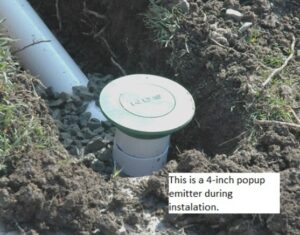flood damage Scottsdale AZ can be devastating, affecting not only your home but also your peace of mind. Whether caused by heavy rains, burst pipes, or natural disasters, managing flood damage effectively is crucial to restoring your home and protecting your health. This comprehensive guide provides essential tips for flood damage cleanup, highlighting key strategies for effective water damage cleanup and considerations for commercial water damage restoration.
Immediate Actions: What to Do When the Water Hits
1. Safety First: Ensuring a Safe Environment
• Protect Yourself: Before you begin any cleanup efforts, ensure that your home is safe. Turn off electricity in affected areas to prevent electrical hazards and avoid stepping into standing water if there’s a risk of contamination.
• Assess the Damage: Quickly evaluate the extent of the flood damage. Take detailed photos or videos of affected areas to support your insurance claim and plan your cleanup strategy.
Tip: Accurate documentation helps in both insurance claims and developing a comprehensive flood damage cleanup plan.
2. Start Water Removal: The First Step in Cleanup
• Remove Standing Water: Use a wet/dry vacuum or pump to extract standing water from floors, carpets, and other surfaces. For extensive flooding, you may need to hire professional services or rent high-capacity equipment.
• Blot and Mop: After removing the bulk of the water, use mops and towels to soak up residual moisture. This helps prevent secondary damage and facilitates faster drying.
Tip: The quicker you start water removal, the less chance there is for mold and mildew to develop.
Drying Out Your Home: Effective Techniques
1. Utilize Fans and Dehumidifiers
• Deploy Fans: Place high-powered fans around the affected area to increase air circulation. This helps evaporate moisture and speeds up the drying process.
• Use Dehumidifiers: Set up dehumidifiers to remove excess humidity from the air. This reduces the risk of mold growth and accelerates the drying of building materials and furnishings.
Tip: Combining mechanical drying methods with natural ventilation is often the most effective approach.
2. Open Windows and Doors
Ventilate the Space: If weather conditions permit, open windows and doors to enhance air circulation. This helps in drying out the space and removing damp air.
Tip: Proper ventilation aids in quicker drying and reduces the chances of lingering moisture causing further damage.
Handling Specific Flood Damage Scenarios
1. Addressing Water Damage Cleanup
• Remove Damaged Items: Dispose of items that cannot be salvaged, such as severely water-damaged carpets, insulation, and drywall. This prevents mold growth and prepares the area for restoration.
• Clean and Sanitize: Clean and disinfect all affected surfaces to remove contaminants. Use a mixture of water and mild detergent or specialized cleaners for flood-damaged areas.
Tip: Thorough cleaning and disinfection are essential to prevent health hazards and ensure a safe living environment.
2. Commercial Water Damage Restoration
• Seek Professional Help: For large-scale or severe damage, consider hiring a commercial water damage restoration service. These professionals have the expertise and equipment to handle complex restoration tasks efficiently.
• Specialized Techniques: Commercial restoration services often use advanced techniques and technologies, such as industrial-grade dehumidifiers and moisture detection tools, to manage extensive damage.
Tip: Professional help ensures that all aspects of flood damage cleanup are handled effectively, reducing the risk of long-term issues.
Long-Term Considerations: Preventing Future Problems
1. Inspect for Mold and Mildew
• Check Hidden Areas: Regularly inspect for signs of mold and mildew, especially in areas that may have been missed during initial cleanup, such as behind walls and under floors.
• Address Mold Promptly: If mold is detected, address it immediately to prevent health risks and further damage. Professional mold remediation may be necessary for extensive infestations.
Tip: Early detection and remediation of mold can prevent costly repairs and health concerns.
2. Assess Structural Integrity
Check for Structural Damage: Examine your home’s structure, including walls, floors, and foundations, for any signs of warping, buckling, or damage. Structural issues may require professional assessment and repair.
Tip: Maintaining the structural integrity of your home is crucial for long-term safety and stability.
Conclusion
Dealing with flood damage can be a daunting task, but taking swift and effective action is essential for restoring your home and preventing long-term problems. By following these essential tips for flood damage cleanup, you can manage the immediate aftermath, dry out your home, and address any specific issues related to water damage.
For extensive or severe flood damage, professional help from commercial water damage restoration Scottsdale AZ services can make a significant difference. These experts bring specialized equipment and expertise to handle complex restoration tasks, ensuring that your property is restored efficiently and effectively.
Investing time and resources into thorough flood damage cleanup not only helps in recovering your home but also safeguards your health and property in the long run. Don’t let flood damage linger—act quickly, consider professional assistance, and take steps to prevent future issues. With the right approach, you can overcome the challenges of flood damage and restore your home to its former condition.




More Stories
Louis Vuitton Wall Art: The Ultimate Statement in Luxury Interior Decor
How to Choose the Right Wedding Photographer in Denver Without Stress
What to Know Before Hiring a Gutter Company in Gainesville FL: A Friendly Guide